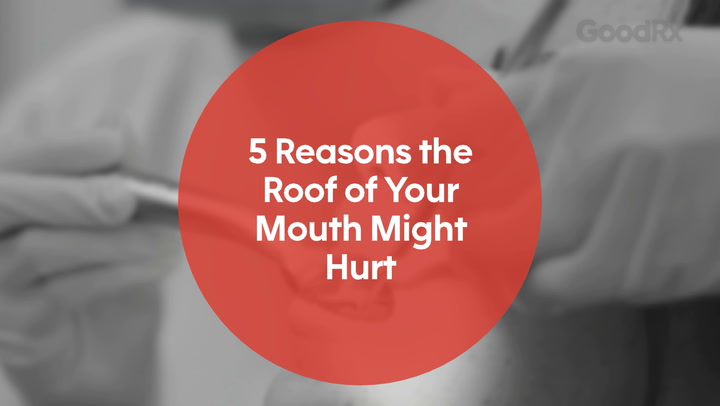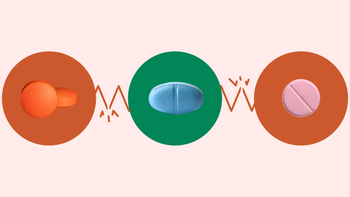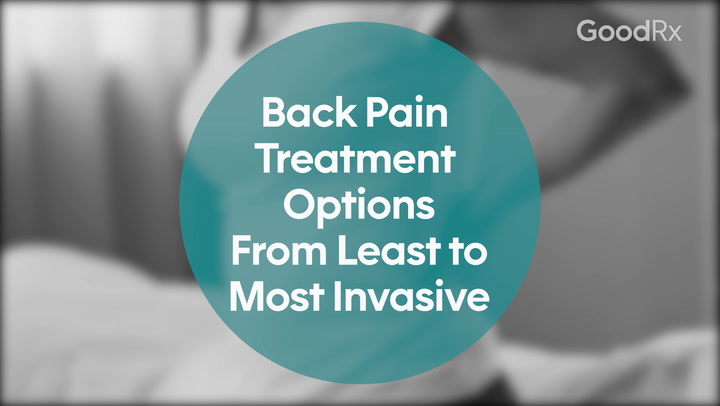
What Causes Abdominal Pain? A List of Possible Causes, and When to Get Help
Key takeaways:
Abdominal pain is a common symptom that can be hard to figure out on your own. The location of the pain and how it feels can help you narrow down what might be causing it.
Testing for abdominal pain can include blood tests, urine tests, and imaging studies like a CT scan or ultrasound. But you may not need all of these tests to figure out the cause.
It’s best to seek immediate care if your abdominal pain is so severe that you can’t sleep, stand, eat, or drink. The ER is usually the best place to go first.
Table of contents

Most people experience episodes of abdominal pain that go away on their own. But it can be scary if the pain doesn’t go away or gets worse. That’s usually the time to ask for help.
Many of the more serious causes of abdominal pain follow a predictable pattern. Healthcare professionals know how to spot these patterns and order the right tests to figure out the problem. We’re here to help you understand how they think about the possible causes of abdominal pain. This way, you’ll know when it’s time to get medical help.
Abdominal pain causes
The specific location of the pain — and the way it feels — can provide important clues about the causes of your abdominal pain. It helps to think of the abdomen in the following sections:
Four quadrants: Right upper, left upper, right lower, left lower
Three central areas: Epigastric (stomach), umbilical (belly button), and suprapubic (around the bladder)
Search and compare options
These sections are shown in the picture below.

Right upper quadrant (RUQ)
This is the top right area of your abdomen, from the bottom of your rib cage to about the level of your belly button. Causes of right upper quadrant pain include:
Liver problems, like hepatitis
Gallbladder conditions, usually gallstones or infection
Kidney stones or kidney infections (while these can cause pain in this area, pain is usually towards your back, also called the “flank”)
Lung conditions, like pneumonia, blood clots, or fluid around your lungs
Stomach problems can also cause pain on one side more than the other. But since it’s more common to feel them in the center, we cover those below.
Left upper quadrant (LUQ)
This is the top left area of your abdomen, also from the rib cage to the level of your belly button. Common causes of pain in this area are:
Spleen enlargement (less common, but this can happen with some infections or blood conditions)
Lung and kidney problems that cause abdominal pain on this side
Epigastric area
This is the upper middle area of your abdomen, the spot most people associate with their stomach. Causes of pain in this area include:
Stomach problems, like gastritis or ulcers
Inflammation of the pancreas (pancreatitis)
Heart problems, like a heart attack
A tear in the aorta (abdominal aortic dissection)
When should you go to the ER? If you’re worried about your symptoms, we can help. Here’s when to go to the ER for vomiting, stomach pain, or bloody poop.
What does appendicitis feel like? Appendicitis is an emergency. Since it only happens once, it’s hard to know what it feels like. People share their experiences here.
Is it heartburn or something else? The feeling of heartburn can be caused by many different things. Here’s how to tell if it could be something more serious.
Right lower quadrant (RLQ)
This is the bottom right corner of the abdomen, down near your groin. Causes of right lower quadrant pain include:
Kidney stones
Ovarian cysts
Infections of the testicle
Ovarian or testicular torsion (when the organ twists on itself and causes extreme pain)
Left lower quadrant (LLQ)
This is the lower left side of the abdomen. Common causes of abdominal pain in this area are:
Diverticulitis or colitis (infections that affect the large intestine)
Testicular and ovarian conditions can also occur on the left side
Umbilical area (belly button)
This is the area right around your belly button (umbilicus). Anything that causes intestinal cramping can cause pain in this area. More serious causes of umbilical abdominal pain include:
Appendicitis
Problems with your aorta, like an aneurysm or dissection
Blockages in your small intestine, called “small bowel obstruction” (note: this condition can cause pain in any area of your abdomen)
Suprapubic area
This is the area right above your pubic bone and genitals, around your bladder. Common causes of pain here include:
Bladder infections or bladder spasms
Infections in your uterus
Pregnancy complications
Some large intestine problems, like diverticulitis
Diagnostic labs and tests for abdominal pain
There are many possible tests that can help figure out the most likely cause of abdominal pain. Some of the more common tests include blood tests, urinalysis, ultrasound studies, and CT scans. We’ll review each in more detail.
Blood tests
Common blood tests for abdominal pain include:
A complete blood cell count (CBC), which measures red and white blood cells. These numbers often change when your body is fighting off an infection or if there’s internal bleeding.
An electrolyte panel (also called a metabolic profile), which can measure kidney function and liver inflammation. It can also show signs of severe infection or dehydration.
Lipase, an enzyme in the blood that increases when someone has pancreatitis.
Urinalysis
A urinalysis can test for a urinary tract infection (UTI). It can also find microscopic amounts of blood in your urine, which might suggest a kidney stone.
Ultrasound studies
Ultrasound studies can check several different organs in your abdomen and pelvis. Unlike an X-ray or CT scan, ultrasounds don’t use any radiation. Another advantage of ultrasounds is that emergency healthcare professionals can sometimes do point-of-care ultrasound scans (at your bedside) to get a rapid diagnosis in emergency situations.
Ultrasound can sometimes help diagnose the common causes of abdominal pain, like:
Gallstones
Kidney stones
Enlarged spleen
Internal bleeding
Appendicitis
Abdominal aorta aneurysms or dissections
Ovarian conditions (like ectopic pregnancies, cysts, or torsion)
Testicular conditions (like torsion)
Pregnancy emergencies
Ultrasounds are particularly good at looking at the gallbladder, uterus, and ovaries. But for some of these conditions, a CT scan may be a better option.
CT scans
CT scans are highly detailed, three-dimensional (3D) X-rays. They can detect most abdominal problems that need prompt treatment. CT scans are good at diagnosing:
Appendicitis
Bowel infections
Kidney stones
Problems with the aorta
Bleeding organs from trauma
What is an ‘acute abdomen’?
“Acute abdomen” is a general term that refers to any abdominal problem that needs emergency surgical treatment. These are the most threatening conditions that emergency healthcare professionals look for when a person has abdominal pain.
Some life-threatening abdominal emergencies that need immediate treatment include:
Serious infections of your intestine that cause significant inflammation, create a hole in your intestine, or form an abscess
Incarcerated hernias, when part of your intestine gets stuck in an existing hernia (a small gap in the abdominal wall or groin)
Bowel perforations, when a hole in your intestine causes leakage from within your bowel into your abdominal cavity
Severe bowel obstructions, especially when they’re affecting blood flow to your intestine
Abdominal aortic dissections
Heavy internal bleeding from any organ in your abdomen
Treatment and home care for abdominal pain
The treatment for abdominal pain depends on the cause. Serious causes of abdominal pain often require a hospital stay and one or more of the following treatments:
Bowel rest: Many of the above conditions get worse with eating and drinking. So, it’s common for people to avoid eating or drinking as their gut recovers.
IV (intravenous) fluids: Since you may not be able to eat or drink, IV fluids can help treat or prevent dehydration in these cases.
Antibiotics: Any type of bacterial infection is typically treated with antibiotics. More severe infections often require IV antibiotics.
Surgery: Some causes of abdominal pain need surgery. Examples include appendicitis, gallbladder infections, severe bowel obstructions, perforated bowel, and any serious bleeding.
Pain and nausea medication: Different medications can help keep you comfortable while being treated for abdominal pain. These can often be taken by mouth or through an IV, depending on the situation.
Not all causes of abdominal pain are serious or require hospital care. Many causes of abdominal pain will go away on their own. Here are some options for what you can take at home for abdominal pain. For:
Acid reflux and indigestion: Over-the-counter (OTC) medicines like antacids and H2 blockers can provide fast relief. More frequent cases of acid reflux may be from GERD (gastroesophageal reflux disease) or an ulcer, which need long-term treatment.
Constipation: There are many different laxatives available OTC. Each one works a little differently, so choose one that feels right for you.
Diarrhea: Loperamide (Imodium) and other OTC medicines can help. But this isn’t the best choice for all types of diarrhea. If you have fever or bloody diarrhea, it’s important to see a healthcare professional.
Menstrual cramping and other gynecology-related pain: Nonsteroidal anti-inflammatory drugs (NSAIDS) like Advil and other OTC medicines like Tylenol are good choices.
For pain that doesn’t fit these common conditions, it’s a good idea to see a healthcare professional. This is especially true if you aren’t sure what’s causing your pain and if it’s getting worse.
When should I go to the hospital for abdominal pain?
Everyone has abdominal pain now and then. Most of the time, it goes away with time and rest. But you should go to the emergency room if you have:
Pain that’s worse than anything you’ve ever felt
Pain that’s so severe you can’t stand up straight
Pain that gets worse even with minor movements, like walking or riding in a car
Pain when you try to take a deep breath
You can’t stop vomiting or keep fluids down
Diarrhea with large amounts of blood
A fever along with pain
Frequently asked questions
Abdominal pain that occurs right after eating can be caused by:
Acid reflux and GERD
Stomach ulcers
Gastritis (inflammation of the stomach lining)
Gastroparesis
Gallstones
Pancreatitis
Irritable bowel syndrome (IBS)
Inflammatory bowel disease
Food allergies and food intolerances
Yes, stress can cause abdominal pain. Your brain and intestines are connected through something called the brain-gut connection. Chemicals that affect your mood — like serotonin and dopamine — also play an important role in gut function. Hormones released into your blood when you’re stressed also impact blood flow to your stomach and intestines. This means that increased stress can lead to a variety of digestive symptoms, like abdominal pain, bloating, diarrhea, and constipation.
Abdominal pain often doesn’t show up in standard tests like blood work or CT scans — especially for conditions like ulcers, gastritis, or IBS. More detailed tests, like endoscopy or colonoscopy, may be needed to look inside your stomach or intestines. But conditions like IBS or fibromyalgia might still show normal test results. If your tests are normal but the pain persists, don’t get discouraged. Follow up with your healthcare team, as it may take time and further evaluations to figure out the cause.
The term “differential diagnosis” refers to a list of the possible causes for any symptom or group of symptoms. When you see a healthcare professional for your abdominal pain, they'll create a list of all the things that could be causing your pain. This list helps them think through all possibilities and decide what tests and treatments to prioritize.
Your differential diagnosis will be different from someone else’s — it’s unique to you. It’s based on what your symptoms feel like, your medical conditions, past surgeries, and your physical exam.
The bottom line
Abdominal pain is a common symptom. Often, the cause isn’t serious, and the pain goes away on its own. But there are some situations when you should see a healthcare professional to help figure out what’s going on. If your symptoms feel severe or worrying, it’s best to go to the nearest ER. Some causes of abdominal pain are life-threatening if not treated. But even if all your testing is normal, don’t get discouraged. Sometimes, it takes time to find the cause of abdominal pain.
Why trust our experts?


References
Brenner, D. M., et al. (2023). Rare, overlooked, or underappreciated causes of recurrent abdominal pain: A primer for gastroenterologists. Clinical Gastroenterology and Hepatology.
MedlinePlus. (2023). Differential diagnosis.
Silverio, L. (2019). Abdominal pain. Society for Academic Emergency Medicine.

























